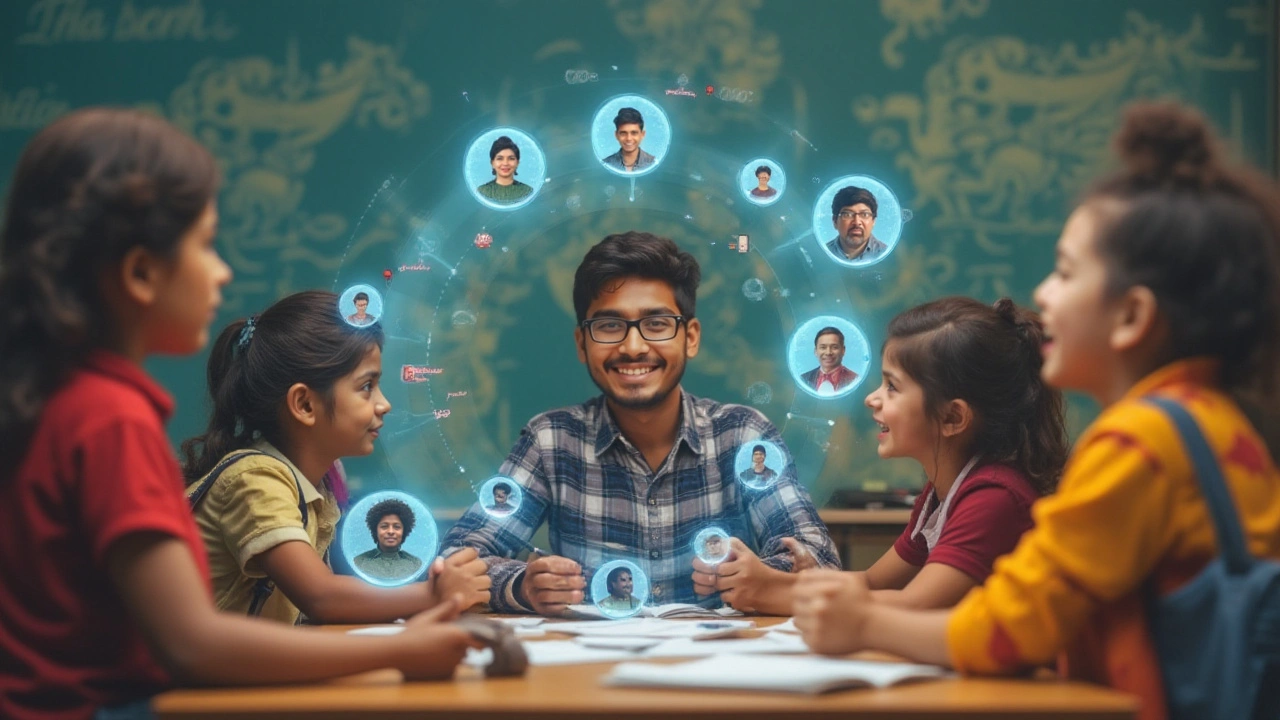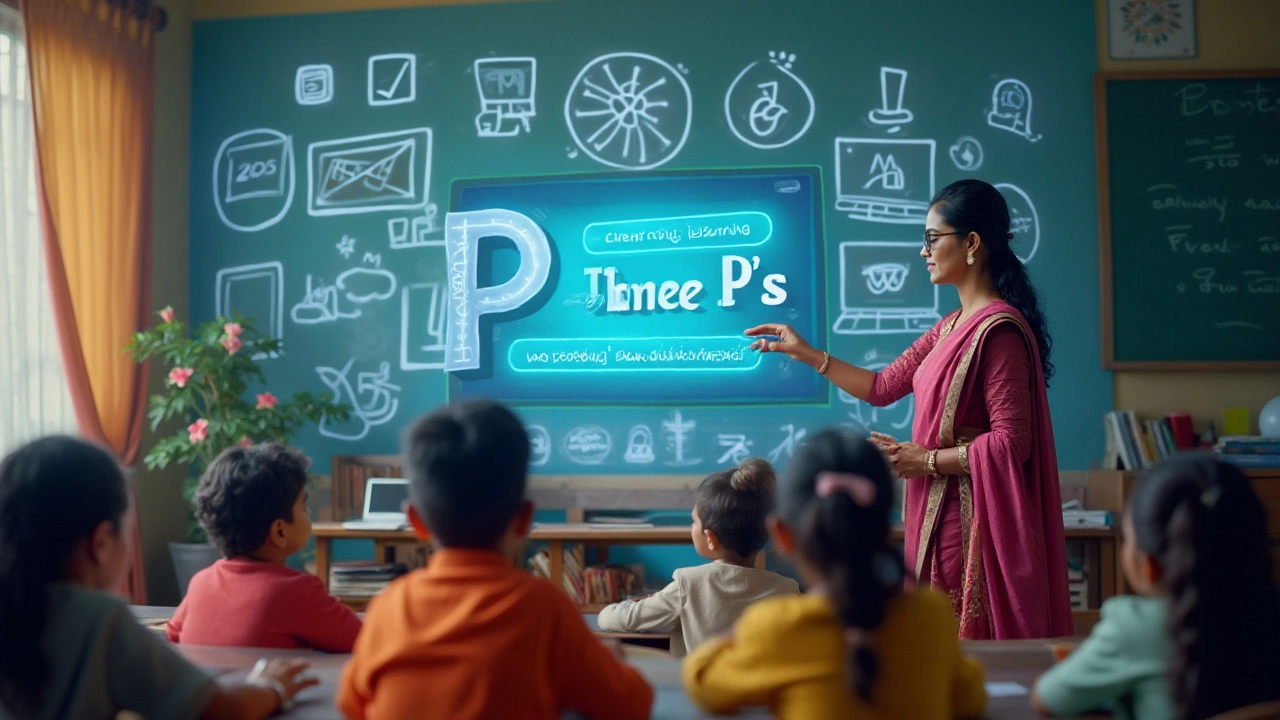In the landscape of digital learning, it's easy to get overwhelmed by the vastness of available resources and technological tools. But at the heart of effective eLearning lie three crucial elements, often referred to as the 'Three P's': Preparation, Participation, and Personalization. Each plays a pivotal role in shaping a successful online education experience.
When learners and educators prioritize these aspects, they create an environment that not only facilitates knowledge acquisition but also fosters engagement, motivation, and a deeper connection to the content. So, what do these Three P's entail, and how can they be leveraged for optimal outcomes? Let's delve into the details.
- Understanding Preparation in eLearning
- The Role of Participation
- Harnessing Personalization for Impact
- Tips for Effective eLearning
- Future Trends in eLearning
Understanding Preparation in eLearning
The journey into eLearning begins well before an individual logs into a platform or enters a virtual classroom. Preparation forms the critical foundation upon which every successful educational endeavor is built, and in the context of digital learning, it assumes even greater importance. A well-prepared learner not only maximizes the potential of available resources but also significantly enhances their academic performance. This phase includes organizing one’s physical and digital space, setting educational goals, and equipping oneself with the necessary tools and technologies required for productive learning sessions.
One might compare this preparation phase to an athlete gearing up for a marathon. Just as a runner trains, establishes a nutritional plan, and selects the right gear, a learner must also map their learning path. For instance, setting clear objectives is akin to discerning the marathon route. Establishing what topics require focus, understanding deadlines, and knowing how to access necessary information all contribute to laser-targeted learning outcomes. It demands an active attitude where the learner doesn't just passively receive information, but is ready to interact, analyze, and apply newfound knowledge.
Moreover, a conducive environment can't be underestimated. Unlike traditional classes, being at home or in another freely chosen space provides comforts that could easily turn into distractions. To counter this, it's paramount to create a dedicated learning environment, free from interruptions, and stocked with all essential materials. This might seem basic, but the difference it makes is profound. Without physical cues from a classroom setting, disciplined time management becomes a lifeline that keeps distractions at bay and the learner anchored to their educational goals.
The implementation of effective preparation also extends into the strategic use of available digital learning tools. In today's world, this means understanding the ins and outs of platforms like Zoom, Blackboard, or Canvas before classes begin. It's vital to familiarize oneself with how forums work, where to find assignments, and how to submit them, thereby reducing unnecessary stress that might arise from last-minute technological hurdles. Access to reliable technology and a stable internet connection further support these efforts.
The importance of preparation can’t be overstated: "By failing to prepare, you are preparing to fail." - Benjamin FranklinRecognizing this significance helps learners approach their studies with a proactive mindset. Educators can assist by providing clear guidelines and instructional videos to walk students through technological aspects ahead of time. This proactive assistance nurtures motivation and confidence among students.
In essence, the preparation phase in online education is all about setting up a learner to succeed. It empowers individuals with foresight and capability, equipping them with tools needed for a fruitful educational journey. By emphasizing this critical first step, learners create a solid foundation that allows them to engage fully and benefit profoundly from the rich, collaborative world of eLearning.
The Role of Participation
Participation in eLearning is more than just logging onto a platform. It's an active, dynamic process that requires learners to engage with the content, interact with peers, and contribute to discussions. In the realm of online education, participation is what transforms a static experience into an interactive journey. It is especially significant because it mirrors the collaborative environment of traditional classrooms, bringing the human element to digital learning.
Studies have consistently shown that students who actively participate in their educational processes are more likely to retain the information and achieve higher grades. This is because active engagement helps in creating a mental map of the knowledge, connecting different concepts, and applying them practically. When students actively ask questions, debate topics, and share insights, they enrich their understanding and help others do the same. For instance, a study by the University of Michigan found that classes with higher student participation levels often lead to better overall student outcomes.
Online platforms offer various tools to facilitate participation such as forums, live chats, video discussions, and collaborative projects. Such tools help in breaking the isolation that can sometimes accompany online education. They allow students to learn from each other and develop crucial skills like communication and teamwork. Each of these tools serves a unique purpose. For example, forums provide a space where learners can post their queries at any time, while live sessions help in real-time interaction. This diversity aids in catering to different learning styles and preferences.
One way to stimulate participation is through gamification. Incorporating game-like elements such as points, levels, and badges can motivate students to complete tasks and participate in discussions. This approach not only makes learning more enjoyable but also encourages a competitive spirit which can drive students to perform better. Scott L. from Arizona State University mentioned, "Gamification in eLearning adds a fun and engaging layer to the learning process, making learners more inclined to participate."
Statistics show that courses which include interactive elements and require participation can increase course completion rates by up to 70%. A table illustrating this can be seen below:
| Course Type | Completion Rate |
|---|---|
| Non-Interactive | 40% |
| Interactive | 70% |
Moreover, fostering a community within an eLearning environment can create a sense of belonging among students. When learners feel like they are part of a group, their motivation and discipline often improve. Creating discussion groups and encouraging peer-to-peer feedback can significantly enhance the learning experience. In this way, participation is not merely a complementary aspect of online education but a cornerstone that supports effective learning processes.

Harnessing Personalization for Impact
The scope of online education has expanded tremendously, and with the rise of digital platforms, educators have a variety of tools at their disposal to tailor the learning experience to each individual. Personalization in eLearning involves adapting the content, delivery methods, and instructional strategies based on the unique needs and preferences of each learner. This is not just a matter of convenience, but a crucial factor that plays a significant role in improving learning outcomes. A study conducted by the Bill & Melinda Gates Foundation found that students using personalized learning paths made substantial gains in mathematics compared to their peers in traditional settings. Such findings underscore the importance and potential of personalization in digital learning environments.
At the core, personalization is about accommodation. It considers the varied learning paces and styles, ensuring that the platform is not a one-size-fits-all endeavor. For instance, some learners might excel through visual content, while others grasp concepts better through auditory explanations. By offering customized pathways, digital platforms can cater to these differences. Tools like learning analytics and AI-driven recommendations help educators track progress and provide insights tailored to the learner's pace and style. AI algorithms analyze interactions within the platform, detecting patterns and suggesting resources or activities that align with a student's specific needs. However, despite these advancements, the human element remains integral. In the words of education pioneer Sir Ken Robinson,
“Education is not a mechanical system; it’s a human system.”
Personalization also embraces the idea of self-directed learning. By allowing students to have a say in their learning journey, eLearning platforms encourage autonomy and responsibility. This approach sees learners set their goals and select content that resonates with their interests or career aspirations. Furthermore, personalized feedback, which is specific rather than generic, helps students understand their strengths and areas for improvement, thereby boosting confidence and engagement. In addition, assessments become more meaningful, focusing on students' comprehension rather than rote memorization. A detailed dashboard indicating progress milestones and areas needing focus enables learners to take charge of their educational experience actively.
The personalization in eLearning isn't solely limited to content and assessments. The technological interface can also adjust according to individual preferences. For instance, accessibility features ensuring that the eLearning experience accommodates those with disabilities demonstrate personalization's breadth. These tools might include speech-to-text software for learners with visual impairments or adjustable screen settings for those with dyslexia. The technological adaptability ensures that learning platforms cater to every student's needs, fostering inclusivity.
As technology continues to evolve, so does the potential for personalization in eLearning. Looking ahead, the interplay between AI, machine learning, and educational strategies promises even more nuanced and effective personalization practices. As platforms become more sophisticated, they will likely offer deeper insights into learning habits and preferences, allowing educators to refine their methods continually. With such vast opportunities and advancements, the future of personalized online education is not just bright; it is downright transformative. In this light, learners not only absorb information but also engage with it meaningfully, thus preparing them effectively for real-world applications and challenges.
Tips for Effective eLearning
As eLearning continues to revolutionize the educational landscape, understanding how to make the most of these digital environments is crucial. Here are some practical tips designed to enhance your online learning experience and ensure its effectiveness. It's essential, first and foremost, to create a designated learning space. This might seem trivial, but having a specific place to engage with your online education can significantly improve focus and productivity. This space should be free from distractions and tailored for comfort, which helps maintain a consistent learning routine.
Another vital tip is to set clear goals and intentions for each session. When learners understand what they aim to achieve, they bring purpose to the learning process. Having specific outcomes in mind can drive motivation and make it easier to chart progress over time. Moreover, organizing learning materials and making use of digital tools that facilitate note-taking and tracking milestones can bolster this process. Leveraging technology, such as organizational apps, can provide structure and enhance the learning journey.
Building a strong support system is crucial in the realm of eLearning. Just as students in traditional classrooms benefit from study groups and teacher interactions, those engaging in digital learning should seek out forums or groups within their eLearning platforms. Interaction with peers not only enriches the learning experience but also provides different perspectives, thereby deepening understanding. Collaborative platforms and discussion boards are excellent places to start.
Balanced Time Management
Effective time management cannot be overstated when it comes to successful eLearning. Students should create schedules that accommodate varied learning paces and styles. Instead of cramming information in one go, break the content into manageable segments. This not only prevents burnout but also allows assimilation of the material at a comfortable pace. A balanced approach to time can reduce the stress often associated with continuous screen time and ensure that learning remains enjoyable.
"An investment in knowledge always pays the best interest." – Benjamin Franklin
Incorporating this mindset into eLearning can yield significant returns in terms of knowledge and skill acquisition.
Embrace Technological Tools
From interactive quizzes to augmented reality experiences, embracing technological tools in the digital learning sphere can create engaging and immersive learning experiences. Educators and learners should leverage the capabilities of their eLearning platforms, making full use of functionalities like breakout rooms, polls, and simulations. Always be on the lookout for updates or new features that may serve to enhance both teaching and learning.
A recent survey showed that learners who actively engage with multimedia resources tend to retain information better and demonstrate improved problem-solving skills. These evolving technologies are designed to cater to different learning styles, ensuring that everyone benefits from what eLearning has to offer. By integrating these strategies, learners can navigate the complexities of the eLearning landscape more effectively and enjoy a fulfilling educational journey.

Future Trends in eLearning
The digital learning horizon is bursting with new possibilities, as the rapid advancements in technology continue to pave innovative paths in online education. One significant trend that's emerging is the rise of artificial intelligence (AI) in personalizing learning experiences. AI can help analyze data on learner behavior, needs, and preferences to tailor course content dynamically. This ensures that every student receives material in a form and at a pace that suits them best, increasing retention and success rates. Beyond personalized learning paths, AI-driven tools can offer real-time feedback, helping learners identify their strengths and areas for improvement swiftly.
Another trend that's taking the digital learning world by storm is the integration of virtual and augmented reality (VR/AR). These technologies allow immersive learning experiences, transforming abstract concepts into tangible experiences. Imagine a history lesson where students are transported to ancient cities, or a science class exploring the depths of the ocean without leaving the classroom. This level of engagement not only makes learning more enjoyable but facilitates a deeper understanding of complex subjects by offering practical experience.
According to John Green, an eLearning pioneer, "Technology should not replace traditional education methods but enhance them. It is the bridge from knowledge to experience."
Microlearning is a growing trend as well, characterized by its ability to break down information into bite-sized, easily digestible units. This approach caters to the modern learner's busy lifestyle, where continuous learning happens on-the-go. Learners can engage with brief modules during short breaks, allowing integration of education into their daily activities seamlessly. With platforms supporting microlearning, learners are empowered to control their educational journeys, fostering a culture of self-directed learning.
Gamification in online education is also gaining traction. By incorporating game-like elements such as points, badges, and leaderboards, eLearning platforms are making education not just informative but entertaining. This approach taps into the intrinsic motivation of competition and accomplishment, making the learning process more engaging. As gamification continues to evolve, we see more sophisticated systems that balance educational outcomes with entertainment, appealing to both younger audiences in schools and adults in professional training.
Besides these dynamic trends, data-driven insights are shaping the future landscape of eLearning. Educational institutions and platforms are increasingly leveraging analytics to understand learner behaviors and course effectiveness. With improved data collection and analysis methods, educators can refine content delivery, predict learning difficulties, and make informed decisions that enhance the quality of education. These insights are vital for developing strategies that boost learner engagement and course completion rates.
